Fox MTB forks overview: models, details and specification
Everything you need to know about the current range of Fox and Marzocchi suspension forks
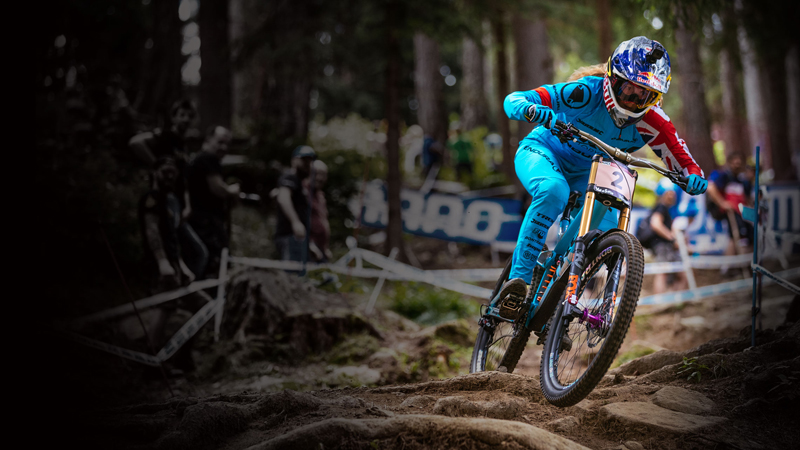
Off-road motorsport suspension legends Fox launched their first Float forks nearly 20 years ago in a proper ‘mic drop’ moment that reset the expectations of what a relatively light trail fork could do. They reset the benchmark again with the hard-hitting, hench-legged 36 and then went on to reset stiffness standards in DH racing with the 40.
The 40 still sits at the top of their gravity family, but the latest range covers every type of off-road riding right down to the AX gravel fork. Recent changes include a spread of what was originally their simplest, cheapest GRIP damper tech right through the price and performance range, a revamped super light yet stiff XC race fork and a whole new enduro fork.
Fox also recently bought the Marzocchi name from the Italian company renowned for their super smooth Bomber series forks. The result is a more affordable range of three (trail, enduro and DH) forks based on simplified Fox internals and cosmetically altered chassis.
Fox and Marzocchi forks you can buy
Why trust BikePerfect
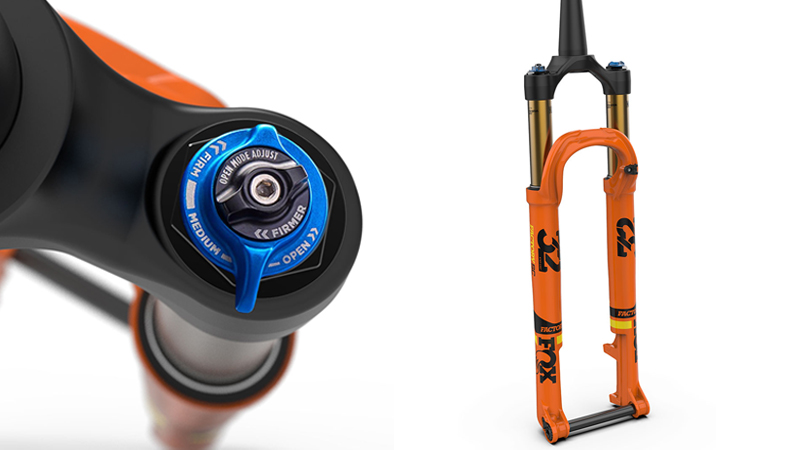
Specifications
Reasons to buy
Reasons to avoid
The lightest Fox XCO fork uses cutaway lower legs for a narrower stance that reduces crown and brace width and mass. That means they weigh as little as 1390g/3.06lbs for the Factory 27.5-inch version. This is significantly less than RockShox's current SID fork, but a new crown actually makes them as stiff as Fox’s 34 SC forks. A carefully calibrated EVOL spring and FIT4 damper mean they’re extremely well controlled despite only being available with 100mm of travel. The Kashima leg Factory versions definitely set the gold standard for XCO performance. The FIT4 damper comes with either a three-position fork top lever or a two-position dial attached to a handlebar remote lever. Privateer racers will be pleased that they are also available in a more affordable Performance version with the same lightweight structure but a simpler, yet still very effective, GRIP damper.
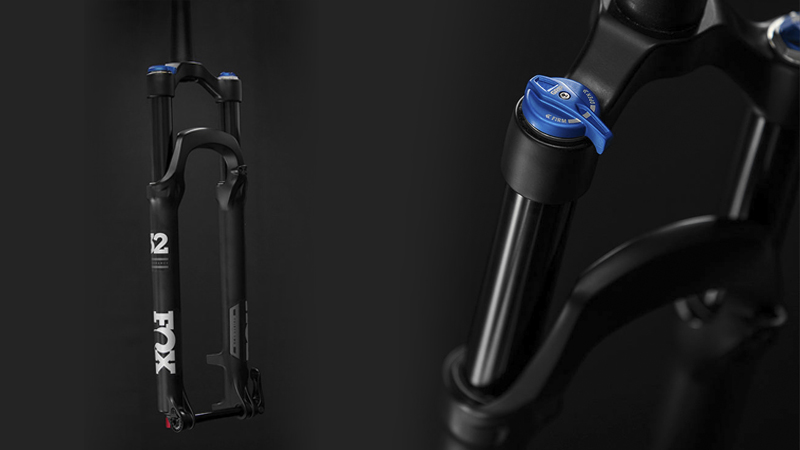
Fox 32
Specifications
Reasons to buy
Reasons to avoid
The full-legged 32 still exists, but it’s clearly being phased out in favor of the lighter Step Cast forks. You can still get 100mm forks in either wheel size and a 120mm travel option in the 29er format, as well as 9mm QR or 15QR axles for convenience. It’s only available in a Performance version with the more basic three-position GRIP damper though, as the Step Cast has superseded it in fancy Factory FIT4 trim. It’s still a smoothly consistent fork though and a valid alternative to the current RockShox SID for affordable race and light trail duties.

Fox 32 AX Step Cast
Specifications
Reasons to buy
Reasons to avoid
The most surprising fork in the Fox lineup is probably this super short (40mm) travel Adventure Cross version of a 32 Step Cast Performance Elite MTB unit. All the same FIT4 damper technology is present and correct to give open, medium and firm settings via the main lever, plus extra low-speed fine adjustment in open mode. The EVOL air spring has been modified to give meaningful control from less than two inches of movement too so you’re getting proper ‘suspension’ on rooty, rocky trails that would rattle a rigid forked bike all over the place. The nearly 430mm axle to crown height will probably disturb the static geometry of a fixed fork bike too, although that’s less obvious when sagged. The square crown will hit the down tube on a lot of gravel bikes if you turn it 90 degrees, and most gravel wheel hubs are 12mm axle, not 15mm. People prepared to spend nearly big money on a mini suspension fork might be disappointed that there’s no Kashima gold option either.
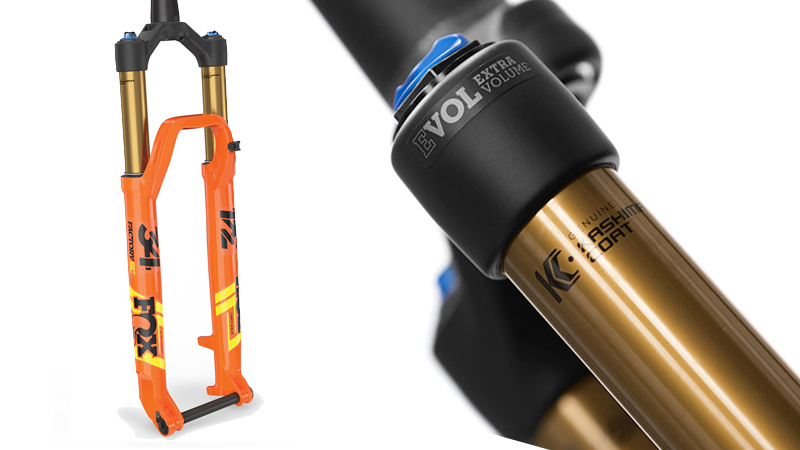
Fox 34 Step Cast
Specifications
Reasons to buy
Reasons to avoid
Despite weighing 230g/0.5lb less than the 140mm full leg 34, Fox claims the 120mm travel, 1590g/3.5lb 34 Step Cast is still as stiff. Or to put it another way, it’s 15 percent stiffer than the 120mm full leg 32 for just 150g more. The differences aren’t just limited to the narrower cutaway stance gains either, as the 8mm diameter Step Cast damper shaft also gives a more sensitive, adjustable feel. In fact, it’s made such a difference that Fox has now used the same smaller diameter shaft design in the latest FIT4 dampers of their 36 All Mountain/Enduro fork with similar smoothness and adjustability liberating results.
The Factory 34 SC comes in 27.5 or 29-inch wheel formats with two color options and either two-position fork top damping or two-position remote control damping. Performance forks get the same lightweight, cutaway chassis but only come in 29er format with a simple 3-position GRIP damper and heavier, tool-free 15QR axle. Still a bargain for a kick-ass lightweight trail fork.

Fox 34
Specifications
Reasons to buy
Reasons to avoid
Fox’s mid-travel, mid-weight but slightly under-muscled fork had something of a troubled start and still hasn’t got the stellar reputation of the 32 and 36. The standard full leg 34 fork still sneaks in under 4lbs (1770g) in 27.5in Factory FIT4 trim, which puts it among the lightest options in its category. Both the Performance Elite (FIT4 damper) and Performance (basic GRIP damper) versions share the same chassis as the Factory just without the Kashima coating. Travel is now limited to 130-150mm (27.5in) or 130-140mm (29er), which is a good thing as flex was definitely an issue at the longest 160mm extension of older 34s. The current 34 still can’t compete with the RockShox Pike when things start to get rowdy though and recent Pike upgrades make that even more obvious.

Specifications
Reasons to buy
Reasons to avoid
Fox kicked off the whole big-legged trail fork category with the 36, and nearly two decades later it’s still a front runner for flat-out, full gas action. Continual evolution means the latest Factory options come in FIT GRIP2 or FIT4 damper options with travel up to 180mm in 27.5-inch or 170mm in 29-inch. The shorter 27.5-inch format with Kabolt axle still weighs under 2kg (4.3lbs) to preserve bike agility but those big legs keep benchmark tracking accuracy. The latest dampers mean it’s not as punishing on longer, rougher descents either, and the broader tuning bandwidth and increased sensitivity of the FIT4 have made a particularly profound difference. Pricing is still slightly higher than the RockShox Lyrik but both forks feeling similarly superb on the trail. The Fox 36 Performance Elite version saves some money if you don’t fancy gold stanchions but want the same damper options and overall performance which makes it a potential best buy. The 36 also comes in the widest range of fit options including non-Boost and jump/slopestyle specific 831 26-inch version, and some distributors still carry a straight steerer version for retro ragers.

Specifications
Reasons to buy
After years of rumors about a bigger-legged, extra aggro version of the 36, Fox has finally released their 38 fork. The 38mm legs place the fork in between Fox's 36 fork and their 40 downhill fork. The 38 gets the classic Kashima Coat finish and features the same technology as other Fox forks, with a GRIP 2 damper and an EVOL air spring to keep riders pinned.
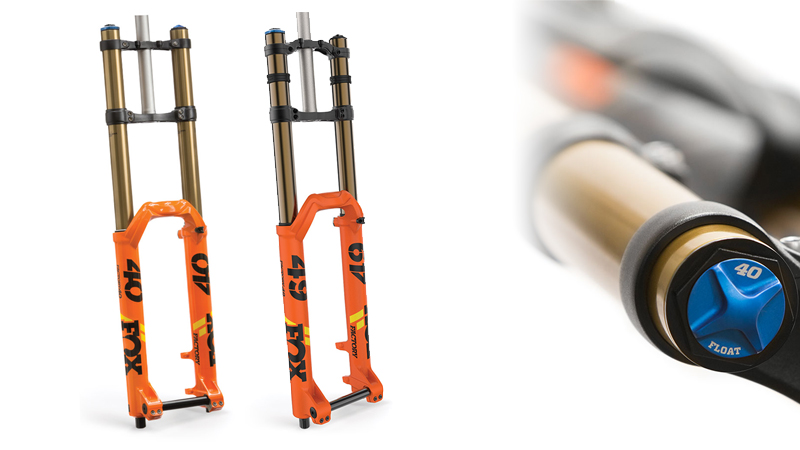
Fox 40
Specifications
Reasons to buy
Reasons to avoid
Fox’s fat-legged 40 set new standards for stiffness and steering accuracy as soon as it arrived over 12 years ago, and it has racked up a stack of titles and race wins to prove it. The latest FIT GRIP2 damper with ‘Variable Valve Control’ gives a more open and fluid ride to improve the grip and comfort of this previously masochistically hardcore fork choice. The EVOL air spring is backed up with an additional chassis air bleed to cope with the longest descents and altitude changes. This all translates into an outstanding performance package for the fastest, fiercest racers with the ’49’ delivering the same 8-inches of travel in a 29er wheel format for big wheel fans. At 2.8kg (6.2lb) even in 27.5-inch, it is relatively weighty and the price is very high as there’s no economy option unless you shift onto Marzocchi branding with the Bomber 58.
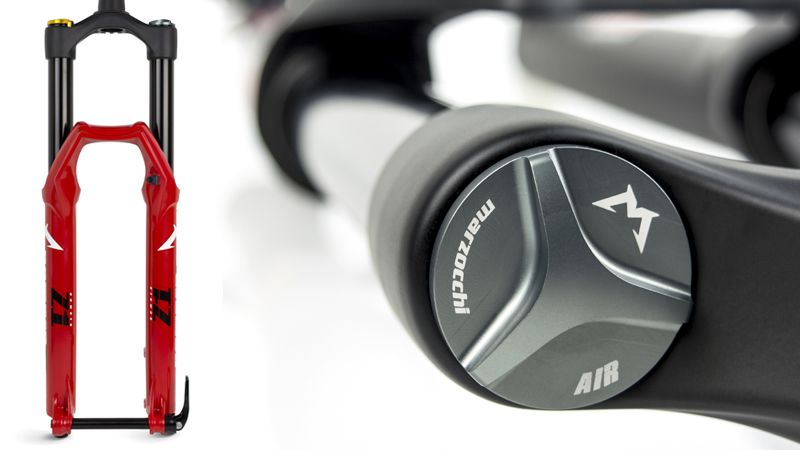
Marzocchi Bomber Z1
Specifications
Reasons to buy
Reasons to avoid
When Fox bought the Marzocchi brand in 2015 there was a hope they’d revive the open bath damper, sloshing oil forks of the Italian firm’s glory days. Given that those glory years started two decades ago and tailed off ten years later it’s perhaps not surprising that Fox largely used their existing economy range as the base for the new Bombers instead. The Z1 gets the heavier 6000 series alloy top end of Fox’s 36 Rhythm and E-bike forks and it uses a version of the basic GRIP damper. The Marzocchi version gets a non-indexed ‘Sweep’ lever rather than three preset positions so you can tune your platform feel more finely. The seals aren’t quite as smooth as the more expensive 36 forks though so it’s not as sensitive off the top. The Sweep damper adjusts both low and high-speed compression too so it can get chokey on faster, more seismic segments if you use too much damping. Leave it open though and it piles into the nastiest rock gardens with glee, shrugging off multiple sizeable hits without worry. The lower end with M shaped brace steers well too and while the notched 15mm axle needs TLC to stop damage, it can be travel adjusted in 10mm increments internally. It is heavier and more expensive than the obvious RockShox Yari and expensive compared to more adjustable X-Fusion and Suntour opposition.
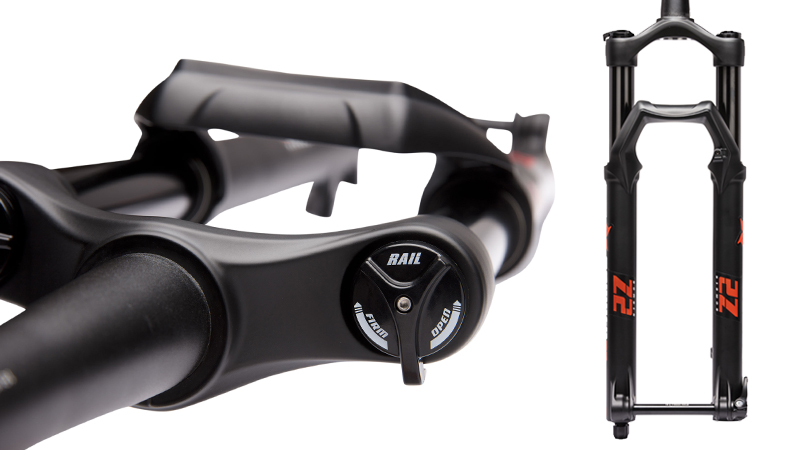
Specifications
Reasons to buy
Reasons to avoid
The most recent ‘comeback’ fork from Marzocchi is a properly affordable fit and forget performer in true ‘Bomber’ style. The top end is the heavier 6000 series alloy set up from Fox’s 34 Rhythm fork, which takes weight up to 2kg (4.4lbs). Cheaper, tighter seals mean it’s not as sensitive off the top as Fox step-siblings either. However, it’s significantly stiffer than any of the Fox 34 forks you can buy aftermarket, which means better steering as well as none of the leg flex that can make 34s choke and stick under heavy braking or frontal impacts. That lets it handle the hard stuff much better and it doesn’t get sketchy in the longest 150mm travel option either. The one-size-fits-all lowers take a 27.5 x 2.8-inch or 29 x 2.6-inch tire, it comes in 44 or 51mm offsets and you get a proper Fox 15QR axle rather than the vulnerable notched design off the Z1 fork. Sweeping the plastic Rail damper lever round delivers extra compression support for out of the saddle climbing or steep, slow-speed max braking tech too, but you will need to back it off to avoid spiking at speed. Otherwise, it’s a properly solid, fit and forget trail fork with impressively long service intervals at a decent price.
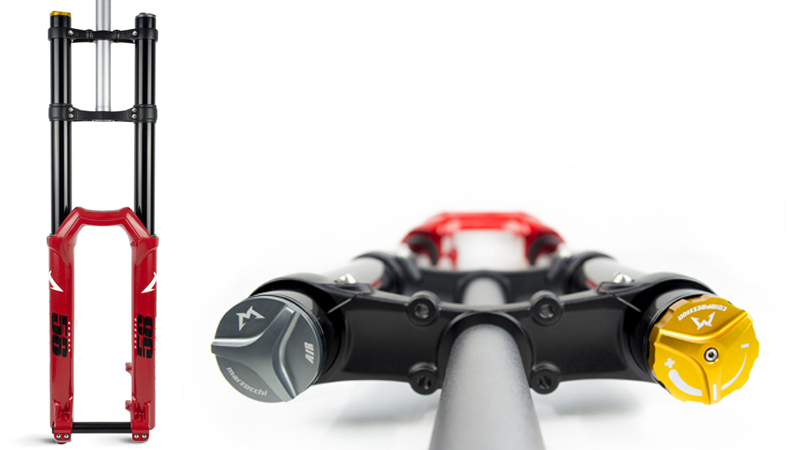
Marzocchi Bomber 58
Specifications
Reasons to buy
Reasons to avoid
If you’ve already read the first two Marzocchi fork descriptions here, you won’t be surprised to hear that the Bomber 58 uses the same top end and structural basics as Fox’s 40 fork. A fresh set of lowers using an M shaped brace completes an impressively stiff and tough fork structure. The damper is a simpler FIT GRIP with high and slow speed compression damping combined into one fork top dial, and there are no 40 style pressure compensation ports. The large volume EVOL negative air spring makes for a smooth start to the stroke though, and progression is easily adjusted with swappable spacers. You ‘only’ get the plain black stanchion finish of Performance forks rather than Kashima gold coating, but then the 58 is cheaper than both Fox and RockShox competitors. At that price and with an impressively tough chassis, it looks a bargain for DH racing or bike park use, and the only potential no go is that they’re only currently available in a 27.5-inch wheel format.

Marzocchi Bomber DJ
Specifications
Reasons to buy
Reasons to avoid
The Bomber DJ is the 100mm cousin of the Bomber Z1. It shares its predecessors 36mm stanchions and features a GRIP damper. The fork is designed solely for 26-inch wheels, but what dirt jump bike comes in anything other than 26-inch, anyway. Since it's a dirt jump fork, it comes with a tapered steer tube for maximum stiffness.
- Empty list
What to know about Fox and Marzocchi forks
Stanchion Diameter
Fox’s fork families are named by their stanchion (upper tube) diameter in millimeters. 32 forks are the lightest XC and gravel forks, 34 are lightweight trail forks, 36 is the trail/enduro fork, 38 is the stoutest enduro fork, and 40 is the triple crown DH fork.
Kashima
The signature gold/bronze finish on the stanchions of Fox Factory range forks is called Kashima. It comes from a Japanese developed, ultra-slick and slippery molybdenum sulphide coating which Fox claim reduces friction and improves longevity. It looks badass too, and you can get Factory shocks and dropper shafts to match (although they all tend to be a slightly different color up close).
15QR
Fox’s cam-locking skewer is arguably the best around, with a broad, finger-friendly spade-ended lever and reliable smoothness. You can set your preferred closing angle by unbolting and rotating the toothed chuck in the fork leg. This insert can also be replaced if you strip the thread but we’ve never actually had to do that.
Step Cast
Step Cast (SC) 32 and 34 forks use cutaway lower legs with a pronounced ‘step’ in the casting. This lets them fit a Boost width axle and disc/wheel into a narrower crown and brace architecture to reduce weight. The lower legs are also hollowed out more than normal, but there’s still enough bushing overlap and top-end stiffness to keep them acceptably accurate. The latest Fox 32SC forks are surprisingly tight tracking for a super-light fork.
FIT Grip
GRIP dampers started off in Fox’s basic Rhythm forks, as they used a simple spring-loaded floating piston and bypass valve that was cheaper to produce than the bladder systems used in FIT forks. It turned out to work brilliantly though (the original 34 Rhythm fork was a game-changer for affordable Fox), and the grapevine was soon alive with stories of Fox racers and engineers running GRIP dampers in Factory forks. That soon became official with the launch of the more complicated GRIP2, which introduced four-way compression and rebound adjustment. This includes ‘Variable Valve Control’, a patented helical spring to control the shims in the rebound circuit rather than a conventional shim stack. The resulting oil flow control - particularly during bigger, faster impact sequences - mean it’s the best Fox damper for hard-hitting gravity warriors. It definitely rewards riders who actually know what the dials do and are happy to spend time tuning, and ironically, GRIP2 forks are now the most expensive option. Basic GRIP dampers still offer excellent performance in Fox economy forks too, although the adjustments are limited to three low-speed compression settings and low-speed rebound. Marzocchi forks also use GRIP, but with a non-indexed ‘Sweep’ lever for ‘infinite’ adjustment on the Z1.
FIT4
FIT4 damper forks are designed more for all-round use with a three-position - Open (max smoothness), Medium (cornering), Firm (climbing) - low-speed compression lever. You can still fine-adjust low-speed compression in open mode too if you want more support. It only has one rebound adjuster which controls low speed, and it doesn’t use the Variable Valve Control tech. The latest FIT4 dampers use a smaller diameter (8 rather than 10mm) SC fork bred damper shaft for a noticeably more sensitive and supple feel than previous FIT4 cartridges. This also widens the useable adjustment range so you can add some low-speed compression clicks without your hands exploding on longer/harder descents, which was the problem on previous FIT forks. Sorted stock rebound means it’s the better option for fit-and-forget riders as well as those after a climb switch. FIT4 forks are also cheaper than GRIP2 forks.
Live Valve
Fox’s proprietary electronic controlled damping suite uses sensors on the fork and frame that monitor incoming impacts up to 1000 times a second. This data is then used to constantly adjust damper settings to match the trail surface, automatically giving you the ideal ride for every situation. The expense and extra hardware mean take-up has been limited so far, but Fox has recently announced an E-Live Valve collaboration with Bosch.
Rhythm
Rhythm forks are the cheapest in each Fox family and use simple Grip damper tech and a heavier upper chassis with 6000 rather than 7000 series alloys. They now come with black stanchions too, rather than the silver originals and they feel great on the trail. Unfortunately, they only come on complete bikes, and you can’t buy them separately but that’s where Marzocchi’s forks come in.
Performance
Performance forks are the most confusing in the Fox range. Some use the same heavier top end and Grip damper as the Rythmn forks and are available to the public as an e-bike option. Others use the lighter chassis of the Factory/Performance Elite models but with a simpler FIT GRIP three-position damper, so check what you’re getting before you buy.
Performance Elite
Performance Elite forks use the same 7000 series upper architecture and FIT GRIP2 or FIT4 damper technology as Factory forks but without Kashima coated stanchions. They come in fewer aftermarket options too, helping Fox reduce cost compared to Factory forks despite comparable performance on the trail.
Factory
Factory forks are Fox’s flagships, fully loaded with either FIT GRIP2 or FIT4 damper technology inside super slick Kashima coated stanchions. They come in the widest range of travel and axle options, and you also get the option of ‘pro’ gloss orange colorway for a truly Factory look.

Guy Kesteven has been working on Bike Perfect since its launch in 2019. He started writing and testing for bike mags in 1996. Since then he’s written several million words about several thousand test bikes and a ridiculous amount of riding gear. He’s also penned a handful of bike-related books and he reviews MTBs over on YouTube.
Current rides: Cervelo ZFS-5, Specialized Chisel, custom Nicolai enduro tandem, Landescape/Swallow custom gravel tandem
Height: 180cm
Weight: 69kg
